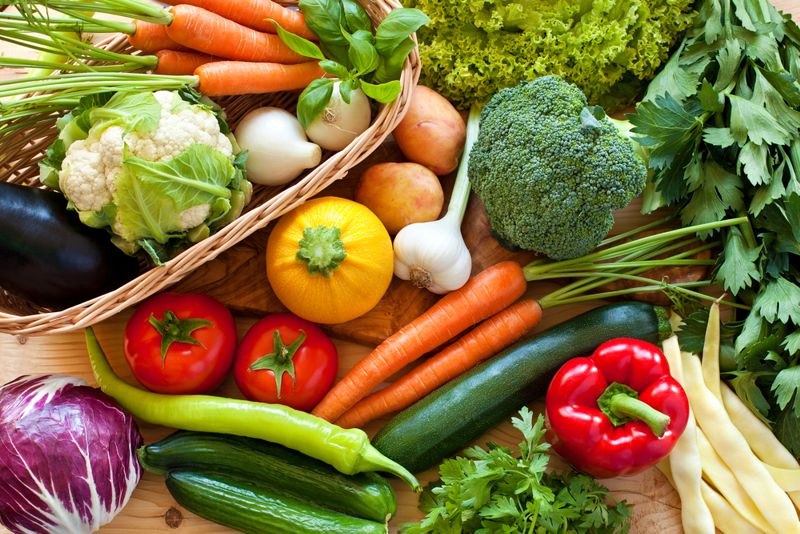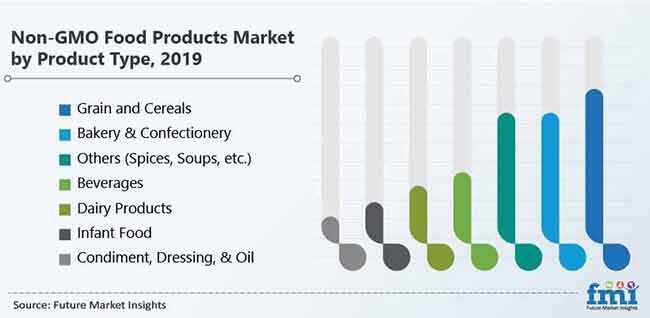
The global non-GMO food products market is poised to grow at an exponential 12% CAGR through the forecast period (2019 – 2029). According to a new study by Future Market Insights (FMI), the market for non-GMO food products is largely influenced by changes in consumer demand and easier access to superior farming technologies.
Non-GMO products have garnered incredible consumer following since its inception. From developing countries to early adopters, consumers worldwide enquire about non-GMO and organic choices in daily food products. Growing consumer traction coupled with advancements in farming technology will propel the global Non-GMO food market to grow at a meteoric CAGR of more than 12% during the forecast period (2019 – 2029).
Request report sample with 250+ pages to gain in-depth insights https://www.futuremarketinsights.com/reports/sample/rep-gb-11088
Manufacturers of non-GMO food products are employing creative marketing strategies that aim at developing consumer interest by attracting, engaging, and delighting consumers with product information. They are deploying bespoke packaging and smart labels to facilitate easy access to non-GMO product details.
Key Research Findings of FMI’s Non-GMO Food Products Market Study
- Grains and cereals will account for major market demand with a growth rate of 22% through 2029
- Bakery and confectionary products will generate lucrative opportunities with 19% growth.
- Indirect distribution channels will prevail in terms of market share and growth.
- North America and Latin America will cumulatively account for more than 50% of the overall market value.
Key Growth Drivers – Non-GMO Food Products Market
- Rising purchase potential and lower costs of production play a major role in the growth of the non-GMO food products market.
- Advances in labeling and packaging practices will contribute significantly to the demand.
- Rising consumer awareness and the prevalence of vegan, plant-based diets, will contribute to market growth.
For More Details, Ask Analyst @ https://www.futuremarketinsights.com/ask-question/rep-gb-11088
Key Impediments – Non-GMO Food Products Market
- Changes in consumer preferences, and economic conditions to demographic trends is a key challenge to manufacturers active in non-GMO food products market.
- Premium pricing of non-GMO food products is also a major challenge restricting the growth of the industry.
The competition landscape of non-GMO food products market remains moderately fragmented and competitive. Key producers are pushing for establishment of distribution warehouses for effective logistics, in addition to mapping future growth trajectories on the basis of consumer income levels and the penetration of vegan, plant based diets.
Market Segmentation
The global Non- GMO food market is segmented in detail to cover every aspect of the market and present complete market intelligence to readers.
By Product
- Grain and Cereals
- Wheat
- Soya
- Corn
- Others
- Bakery & Confectionery
- Bread
- Pastry
- Candy
- Others
- Beverages
- Alcoholic Beverages
- Non-Alcoholic Beverages
- Dairy Products
- Yogurt
- Cheese
- Ice Cream
- Others
- Infant Food
- Condiment, Dressing, & Oil
- Vegetable Oils
- Jams, Jellies
- Syrups
- Others (Spices, Soups, etc.)
By Distribution Channel
- Direct Sales/ B2B
- Indirect Sales/ B2C
- Supermarket/Hypermarket
- Wholesaler
- Online Retail
- Specialty Stores
- Other Retail Format
Contact Sales for Further Assistance in Purchasing this Report- https://www.futuremarketinsights.com/checkout/11088
FREQUENTLY ASKED QUESTIONS ABOUT NON-GMO FOOD PRODUCTS MARKET
What drives the non-GMO food product market?
The non-GMO food products market is driven by plant-based and vegan diet trends that lays emphasis on integrating organic, non-GMO food products in daily dietary plans. Growing consumer awareness about benefits of non-GMO food products play a supporting role in development of this market.
Which factors put market players at risk?
Increasing investments from conglomerates and multinationals to venture into the non-GMO food product space poses mild restraints for dedicated market players. The lack of universal quality standards renders manufacturers to market their products based on consumer perception.
Which region will lead the global sales of non-GMO food products?
Latin America leads the global sales of non-GMO food products on the back of increasing disposable income and dietary trends. Consumers in Latin American countries are creating an ecosystem of early-adoption where non-GMO food products are one of the first things they wish to adopt.
Which product type segment offers most lucrative growth opportunities?
Grains and Cereals offer the most remunerative growth opportunities. Wheat, corn, soybean are primary source of fibre and carbohydrates for consumers worldwide. Hence, the dominance of grains and cereals is a result of that prevailing trend.

